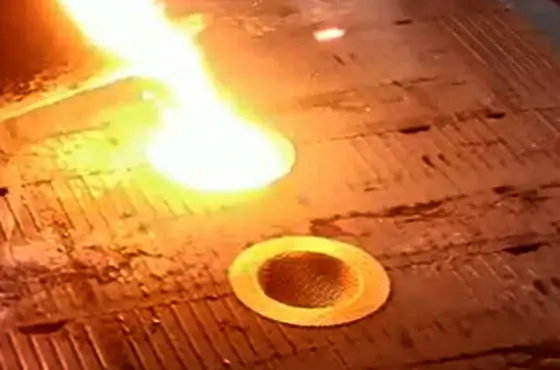During the steel casting process, filtering impurities in molten steel needs to be achieved through systematic process control and technical means, mainly including source prevention and control, process purification and terminal filtration at three levels:
Prevent impurities (source control)
Non-oxidation protective casting
The ladle to the tundish is sealed with a long nozzle, and the tundish to the crystallizer uses an immersed nozzle to isolate the air, with a double-layer slag covering agent for the tundish and a crystallizer protective slag to avoid secondary oxidation of the molten steel to form inclusions.
Raw materials and smelting optimization
Use slag-free steelmaking technology (such as eccentric furnace bottom electric furnace steelmaking) to reduce slag mixing;
Pre-treat scrap steel raw materials, preheat desulfurization to reduce initial impurities;
Add refining agents (such as lime and fluorite) for deoxidation and desulfurization, and promote impurities to float to the slag layer.
Promote impurity separation (process purification)
Dynamic assisted floating
Blow argon in the ladle/tundish to stir, eliminate dead zones, and accelerate the floating and separation of inclusions;
Prolong the residence time of molten steel in the tundish (increase capacity or deepen the molten pool) to strengthen impurity removal.
Slag adsorption removal
Add slag remover (perlite-based or volcanic ash-based): quickly adsorb oxides and sulfides to form an easily peelable slag shell;
Make high-basicity slag during the reduction period to adsorb sulfides and tiny inclusions.
Electromagnetic technology application
Electromagnetic brake device is installed in the crystallizer to suppress injection impact and promote the floating of inclusions.
Terminal physical filtration (direct interception)
Filter interception
Set high-temperature resistant fiber filters(mesh size 0.8×0.8~2.5×2.5mm) in the casting system to capture bubbles, ash inclusions and inclusions, and reduce the defects of pores and sand holes in the castings.

Tundish structure optimization
Set up slag retaining walls, dams and ceramic filters to enhance the collision aggregation and mechanical interception of inclusions.
Key process coordination
| Measures | Function | Applicable links |
|---|---|---|
| Deslagging agent coverage | Slag aggregation, slag blocking, heat preservation, and secondary oxidation prevention | Ladle/Tundish |
| High-aluminum refractory lining | Adsorb Al₂O₃ inclusions and reduce molten steel pollution | Ladle lining |
| Refining process selection | LF/VOD and other refining methods deeply purify molten steel and improve inclusion morphology | Refining process |
Operation points
Deslagging agent dosage: 1~3kg/ton molten steel, dynamically adjusted according to the molten pool area and temperature;
Filter selection: Match the mesh size according to the casting precision requirements (such as 0.8mm fine mesh for precision parts).
Reducing impurity generation through source prevention and control, promoting separation through process purification, and achieving precise interception through terminal filtration can significantly improve the purity of molten steel and ensure the quality of castings.

